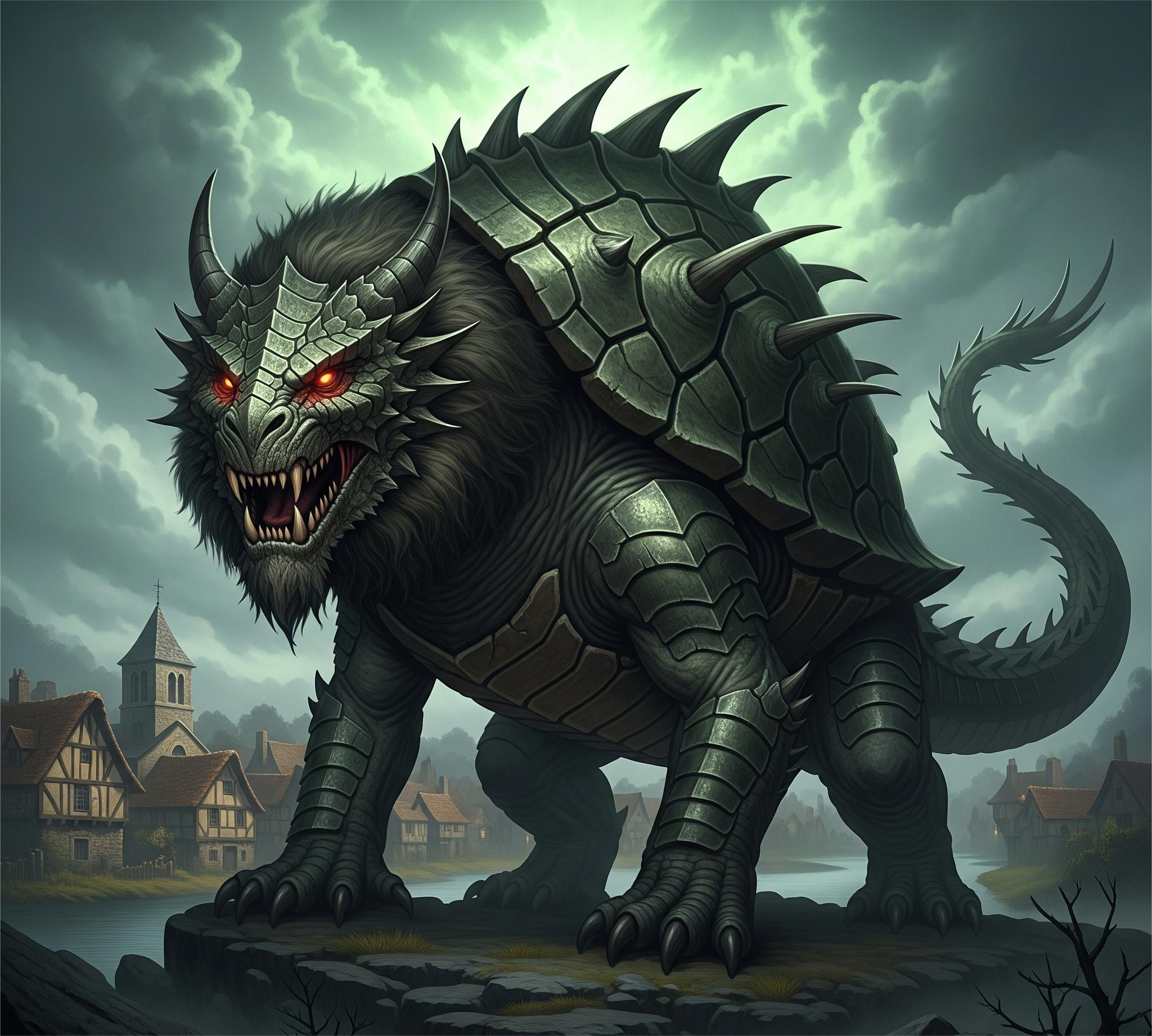In the heart of medieval Provence, where the Rhône River winds through quiet French towns, lives a legend that blends fire-breathing terror with saintly redemption — the story of the Tarasque, the infamous dragon of France.
A Beast Beyond Imagination
According to legend, the Tarasque was no ordinary monster. It emerged from the depths of the Rhône near the town of Tarascon, a fearsome hybrid said to have the body of an ox, six bear-like legs, a lion’s head, and a serpent’s tail covered in barbed scales. It could breathe fire, capsize boats, and devour travelers whole. Its origin? Some tales say it was the offspring of the Leviathan and Onachus, both mythical beasts from ancient lore — which only fueled its fearsome reputation.
The people of Provence lived in constant dread. Warriors, hunters, and even armies failed to bring the Tarasque down. It was more than just a monster — it became a symbol of uncontrollable chaos.
Saint Martha and the Power of Peace
Everything changed with the arrival of Saint Martha, the sister of Mary Magdalene and Lazarus, who, according to Christian tradition, came to southern France after fleeing persecution in the Holy Land.
Rather than fight the creature with weapons, Martha approached it with faith and compassion. She found the Tarasque in the forest, prayed, sang hymns, and calmed it with holy water and the sign of the cross. The once-terrifying beast grew docile. Martha then led it back to Tarascon, where terrified villagers — still thinking it dangerous — killed the beast.
Martha forgave them and preached a message of peace. The creature’s remains were buried, and the town took its name from the slain dragon: Tarascon.
Symbolism and Celebration
Over time, the Tarasque came to symbolize the taming of evil through faith, a recurring theme in Christian hagiography. But the legend also holds older, pagan echoes — dragons and serpents were long associated with natural disasters, chaos, or untamed nature.
In a fascinating twist, the Tarasque was eventually adopted as a symbol of the town’s identity rather than its shame. Since the 15th century, the Festival of the Tarasque has taken place in Tarascon each summer, featuring a giant effigy of the dragon paraded through the streets to music, laughter, and celebration. The event was even inscribed on the UNESCO list of Intangible Cultural Heritage in 2005.
From Fear to Folklore
The story of the Tarasque blends Christian legend, local folklore, and mythic archetypes — a monstrous beast, a saintly figure, and the eternal battle between destruction and harmony. Its transformation from terror to tradition shows how communities reinterpret fear, reshape their past, and embrace myth to define their cultural identity.
Fun Fact:
The Tarasque even appears in medieval bestiaries and is considered one of the few mythical dragons “defeated without violence.” Its tale continues to inspire books, artwork, and even modern fantasy role-playing games.






